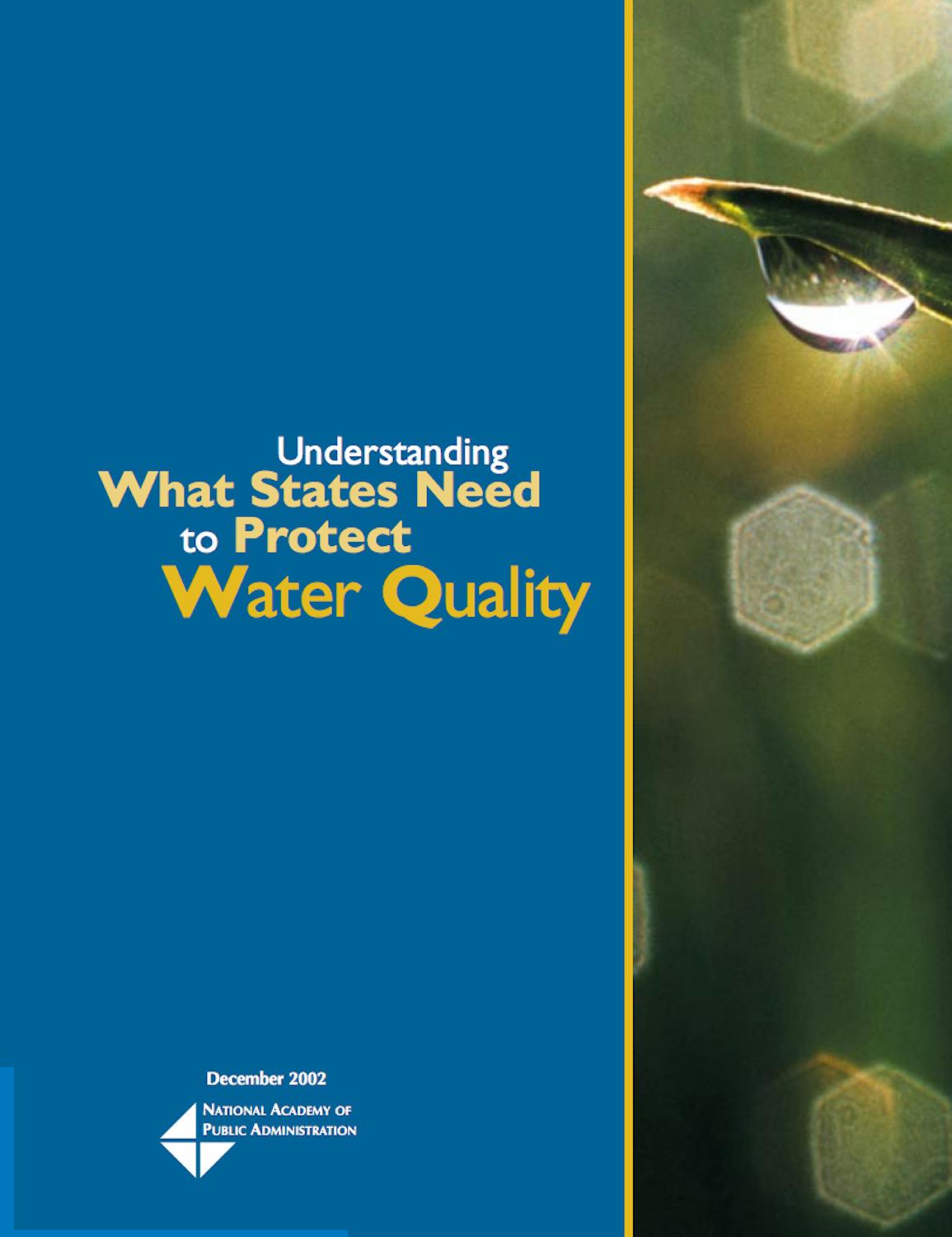
Understanding What States Need to Protect Water Quality
The scope of water quality programs has grown tremendously since the Clean Water Act (CWA) was first enacted in 1972. But federal funding to the states—which are responsible for most of the day-to-day implementation of these programs—has not kept pace.
EPA has asked the National Academy of Public Administration (the Academy) to review the methodologies and techniques used in the Resource Analysis project and determine whether they produced a reasonable estimate of the national funding gap for state water programs.
Click the button below to view the View Study Report.
View ReportKey Findings
Based on its examination of the State Expenditures Survey, the Needs Model, and the estimation techniques used by the Task Force, the Panel concludes that between $0.7 billion and $1.0 billion (after rounding to significant digits) is a sound national estimate of the gap between the resources states now have and what they would need to fully implement water programs. The Panel further concludes that this national estimate is probably low because it does not include the costs of new and expanding water programs and may also underestimate the costs of state employees.
Recommendations
The Panel commends the states and EPA for undertaking the challenge of creating the Needs Model to produce more reliable estimates of state workloads for implementing water programs and their associated costs. This new workload model can be used to project future resource needs on a nationwide basis, help states plan and manage their water programs, and facilitate state sharing of practices to make their water programs more efficient and cost-effective. The success of this effort demonstrates the value of collaboration and constructive communication between EPA and the states.
